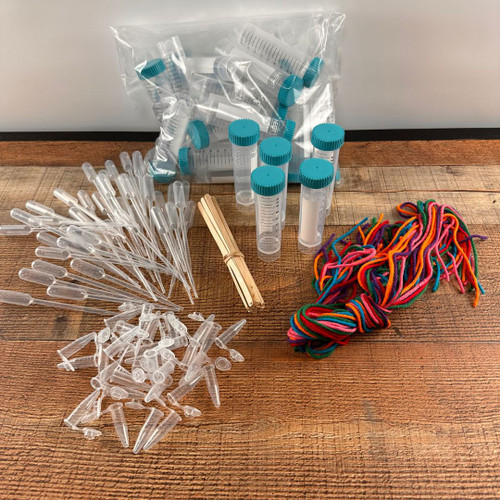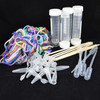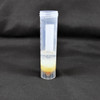Grades 3–5 (Kit)
Is there DNA in my food? Absolutely! This hands-on kit allows students to extract and observe strands of DNA from wheat germ—then wear what they find as a necklace! Students discover that every variety of wheat has DNA that gives it specific genetic traits and characteristics, making this a memorable introduction to genetics and biotechnology.
The activity helps students connect biology concepts to agriculture, answering the question “Where does my food come from?” while sparking curiosity about science and genetics. The kit includes enough supplies for 30 students working individually.
Kit Contents
- Wheat germ
- Test tubes
- Stir sticks
- Pipettes
- Microcentrifuge tubes
- Yarn for necklaces
- Instructions
Need more materials? Refill kits are available.
Additional Materials
The following materials are required but not included in the kit:
- Fresh or vacuum-packed wheat germ
- Warm water (not boiled)
- Dish soap
- Isopropyl (rubbing) alcohol
- Teaspoons
- Tablespoons
- Safety glasses
Teacher Tips: For best results, pre-chill the isopropyl alcohol in the freezer for several hours before the activity. Make sure water is warm (but not hot) to avoid denaturing the DNA. Remind students to stir gently to avoid breaking the DNA strands into very small pieces.
Lesson Plans
Use this kit with the featured lesson: Wheat Germ DNA.
Find more lessons on genetics, plant science, and biotechnology on the National Agricultural Literacy Curriculum Matrix.
Extend the Learning
Have students compare DNA extractions from wheat germ with other sources such as strawberries, bananas, or onions, and discuss why understanding DNA is important for plant breeding and food production.










